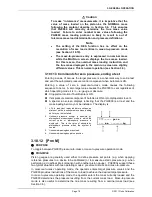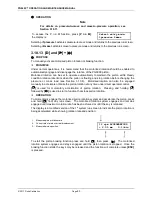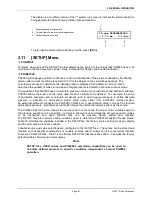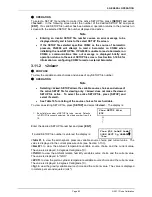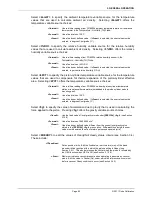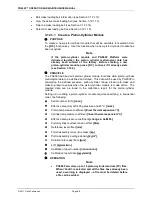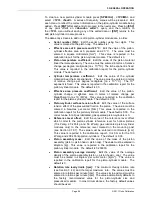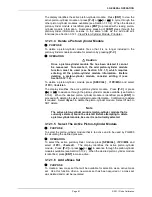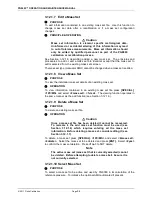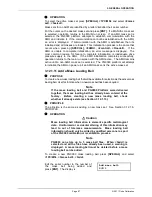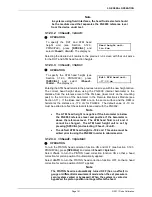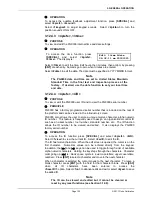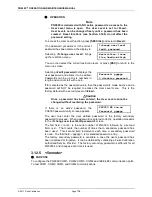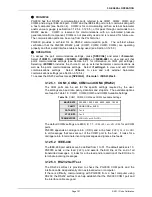
Page 93
© 2011 Fluke Calibration
7.
0.2 kg mass
: Single tubular, binary mass.
8.
0.1 kg mass
: Single tubular, binary mass.
9.
Trim masses
: Every standard mass set has a trim mass set made up of
masses from 50 to 0.01 g. These masses are NOT defined and entered as
part of the mass set.
Caution
When PG9000 provides mass loading instructions and calculates
the true mass of the mass currently loaded, it assumes that the
mass set in use has been set up correctly and that masses have
been loaded following PG9000 mass loading protocol (see Section
3.6). For PG9000 mass loading protocol to operate properly, the
mass set in use must be EXACTLY the mass set that has been
defined by the add and/or edit mass function. No extra mass can
be included, no mass used can be missing and the sequential
numbers of masses in each mass group must be followed with the
correct true mass value entered for each individual mass. Using a
mass set that is not accurately set up may result in out of
tolerance pressure definitions.
Note
Though the piston and the mass loading bell constitute part of
the mass load, they are not included in the definition of a mass
set. Also, one PG9000 system may be used with several piston-
cylinder modules, mass loading bells and mass sets.
Therefore, the piston mass and mass loading bell mass
information are not part of the mass set. Piston mass
information is defined and stored in the piston-cylinder module
file (see Section 3.12.1.1) and mass loading bell information is
defined and stored in a separate mass loading bell files (see
Section 3.12.1.11). In an AMH mass set, the binary mass carrier
and mass lifting shaft are considered part of the bell.
OPERATION
To create a new PG9000 mass set there are three sequential steps:
Initialize mass set: Define the serial number, density, mass set type (manual
or AMH), calibration report number and date.
Define the individual masses: edit, add and delete mass groups as
necessary to identify and define all masses in the mass set.
Save mass set file or abandon changes.
Press
[SPECIAL]
,
<1PC/MS>
and select
<2mass set>
,
<3add>
.
Step
: Initialize Mass Set
Edit the serial number to the number of
the mass set being added and press
[ENT].
The display is:
Add mass set:
S/N 1
Edit the density of the masses being
added (all PG9000 mass sets have
density of 8000 kg/m
3
) and press
[ENT]
.
The display is:
Mass density:
8000 kg/m3
Select
<1manual>
for a manual mass set
or
<2AMH>
for an automated mass
handler mass set.
Mass set type:
1manual 2AMH
Summary of Contents for PG9000 Series
Page 10: ...PG9602 OPERATION AND MAINTENANCE MANUAL 2011 Fluke Calibration Page X Notes...
Page 128: ...PG9602 OPERATION AND MAINTENANCE MANUAL 2011 Fluke Calibration Page 118 Notes...
Page 164: ...PG9602 OPERATION AND MAINTENANCE MANUAL 2011 Fluke Calibration Page 154 Notes...
Page 188: ...PG9602 OPERATION AND MAINTENANCE MANUAL 2011 Fluke Calibration Page 178 Notes...
Page 192: ...PG9602 OPERATION AND MAINTENANCE MANUAL 2011 Fluke Calibration Page 182 Notes...

